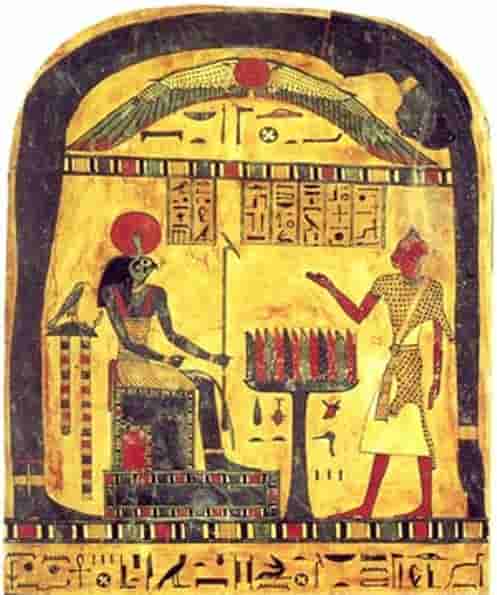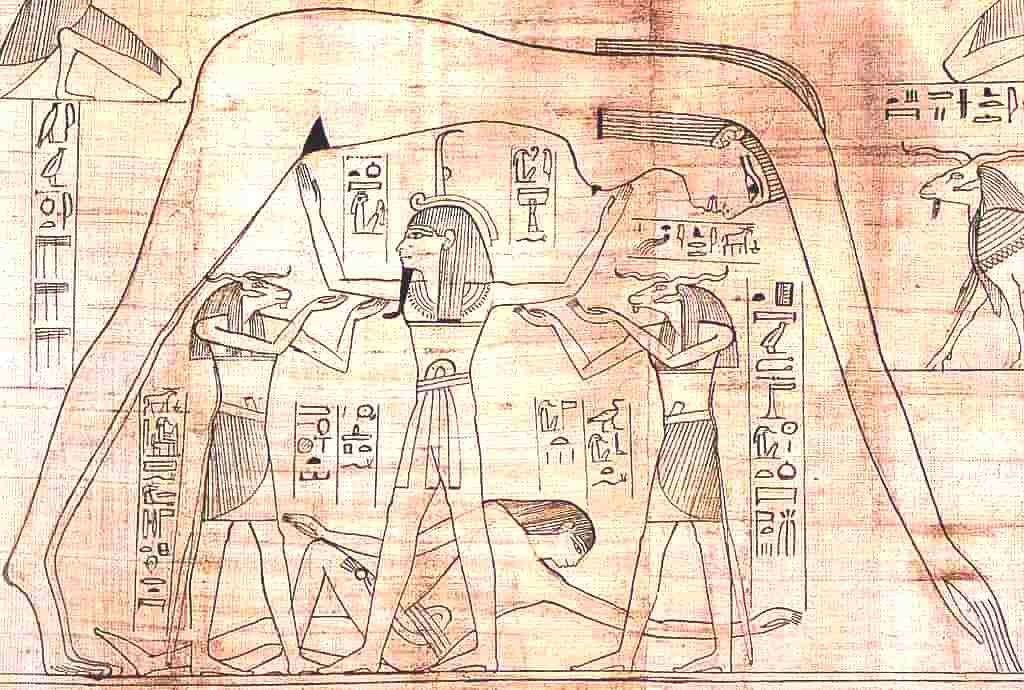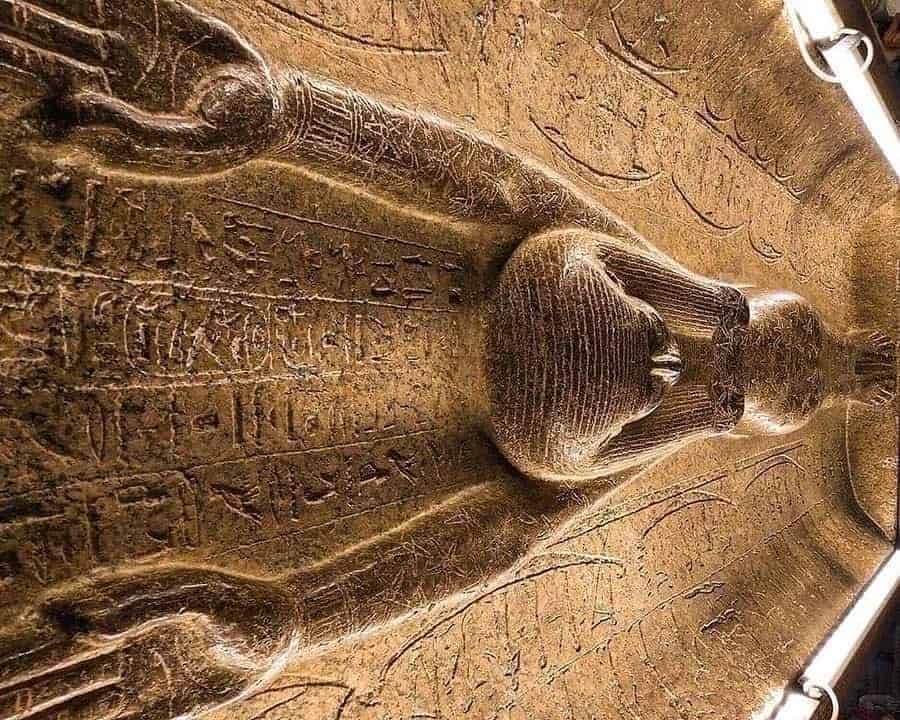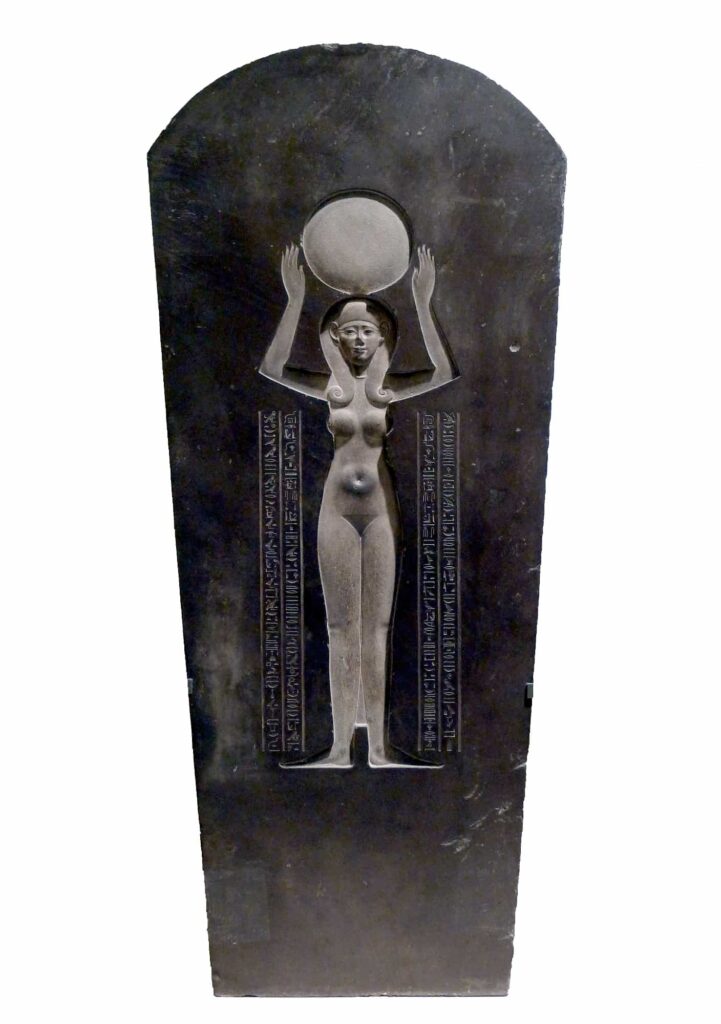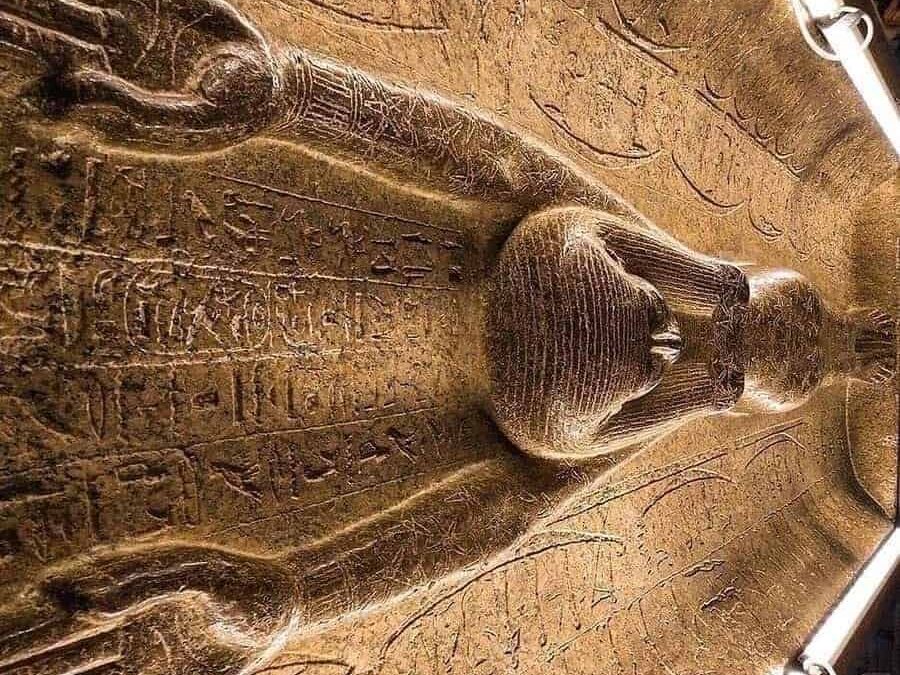Goddess Nut is a female deity of the ancient Egyptian pantheon, the daughter of Shu and Tefnut. She is considered the goddess of heaven and the creative divinity of the universe. She is both the sister and wife of Geb, and with him, she conceived all the Osiriac gods: Osiris, Horus, Seth, Nephthys, and Isis, in that order.
According to myth, Nut created five of the 365 days in a year. Her father, Shu, and Ra attempted to separate her from Geb to prevent them from having children. Consequently, Ra forbade her from meeting Geb during the 360 days of the Egyptian calendar.
However, Goddess Nut managed to overcome this ban by adding five days using fragments of time she obtained from the moon. These days are known as the “Epagomenal days” and constitute a separate month. The ancient Egyptians referred to them as “heru renpet,” and each year, they celebrated the birth of the children of Nut and Geb at the end of the year. On each of these days, one of the gods was born:
- Osiris: “King of Beyond,” born on the first day.
- Horus the Elder: King of Egypt, born on the second day.
- Set: Chaos and the desert, born on the third day.
- Isis: Throne of Egypt, born on the fourth day.
- Nephthys: Night and death, the last born on the fifth day.
Nut is typically represented as an arched woman over the earth, with her feet and hands extended. Her hands always point to the East, and her feet to the West. Her body is usually adorned with stars.
Nut’s origins can be traced to Heliopolis, earning her the title of “Lady of Heliopolis,” and she is closely associated with the sun’s cycle. She is linked to the solar cycle, symbolized by the act of Nut swallowing Ra every night as he sailed through her body on the solar boat, only to give birth to the new day each morning, like a beetle representing the first sun of the day.
Goddess Nut: The Celestial Protector
During the night, the sun traversed her body, while the stars and the moon took their journey through her during the day.
In the context of funerals, Goddess Nut, much like Ra, was revered as the deity responsible for the rebirth of the deceased. Those who passed away were believed to transform into stars residing within her celestial form. Her representation can often be found at the lower sections of sarcophagi lids.
Goddess Nut is depicted with outstretched wings, serving as a protective figure for the departed. She can also be found within sarcophagi, her arms raised, assisting the souls in their journey to the afterlife.
It is her bare chest that provides solace to the departed. She is often depicted on temple and tomb roofs. Her dwelling is said to be a sycamore tree, and its branches provide refuge for weary souls.
Her laughter is like thunder, her tears bring the rain; she is the mother of all celestial bodies. Each day, these celestial entities enter through her mouth and exit through her womb, symbolizing a daily rebirth.
Her extremities symbolize the four pillars upon which the sky rests. Iconographically, she is recognized by the circular water pitcher atop her head, often bearing a celestial sign, a ceiling motif, or a hieroglyph of her name. Additionally, Goddess Nut is also depicted as a cow with a starry belly.
Goddess Nut was the Lady or Queen of Heaven, embodying the celestial vault that teemed with life in the eyes of the ancient Egyptians. She had sanctuaries in Memphis and the Delta region, with another in Dandarah.
